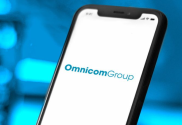
Remote Tools & People Analytics to Lead the Future of Work
The pandemic has transformed workforce management and has led to the emergence of the Distributed Workforce Model. This model, characterized by its flexibility, diversity, and support for remote working, is reshaping the future of work. It emphasizes collaboration over mere cooperation and requires a people-first approach to understand the workforce’s needs in real-time.
The model offers benefits such as better work-life balance, access to top talent, increased innovation and productivity, and 24/7 responsiveness. Companies like Atlassian, Canva, Salesforce, and Dell have successfully adopted this model. But do you know ‘how’? This blog will help you look at the future of work closely and choose the right essentials as you transverse from the traditional workforce model to the distributed workforce model.
So, What Would the Future of Work Look Like in a Distributed Workforce Model?
In a Distributed Workforce Model, the company’s workforce is spread over different geographical locations. It is a flexible remote working model and comprises employees who are working from home spaces, public spaces, or co-worker spaces and telecommuting or working at satellite offices along with the employees who are working at the traditional office location.
To thrive in the future of work, a data-driven approach is crucial, with remote tools and practices such as candidate evaluation, training and development, employee engagement, people analytics, performance management, data security, and remote communication and collaboration. By embracing these changes, companies can gain a competitive advantage.
John Maeda, the CXO of Publicis Sapient (an American digital consulting company), has created the ‘5 pillars of the Distributed Workforce’ that best describes the essence of the Distributed Workforce Model.
Remote Work ≠ Distributed Work Model
There’s an interesting point that often confuses people. Note that remote working isn’t the same as distributed working. Remote work is an act of working outside the office. In contrast, distributed work is more about adopting a new mindset of working in a group and getting things done by collaborating.
Collaboration > Cooperation
Distributed company involves bringing people together, especially with various Collaboration tools where instant sharing, communication, and feedback occur. It is different from Cooperation, which just means working at a distance and helping when asked for.
Change is always an emotional journey
Before making the transition to a distributed company and investing in remote tools, it is best to understand the workforce’s needs, capabilities, etc., by using a people-first approach.
Place-making Forms the Grounds for Work-Making
When it comes to distributed work, a place is more of a ‘digital space’ than a traditional work setting, where it is the office people go to – so employers should focus on creating a stable foundation.
The Future of Distributed Work looks bright
Now that virtual and physical realities are getting intermingled with time, such a distributed remote working culture with its potential is shaping the future of work.
Why do the Distributed Workforce Model Stand Out?
There are many workforce models that were proposed to meet the
Ideal for new workforce entrants Gen-Z and Millenials.
Some people prefer to work from home, while others prefer office setups. But one thing that is common among every section of the workforce is their preference towards Flexibility – which is the key feature of the Distributed Workforce Model.
Also, using the right people analytic tool, the model allows recruiters to tap and filter the young and culturally fit talents who are genuinely enthusiastic about the job role.
Better Work-Life Balance.
A distributed work environment allows flexibility, which in turn enables the employees to achieve an excellent work-life balance. Employees get advantages such as being able to relocate due to personal commitments, transfer of the spouse, etc., without switching jobs. This lets them balance work and personal life without having to choose anyone.
Working With The Best of Talent.
As Distributed Work breaks the restriction of hiring only from one geographical area, it widens the opportunity to hire better talent from a broader range of applicants. When companies prioritize quality over location, they have a highly skilled workforce.
Innovation and Productivity.
Two main reasons that Distributed Work drives innovation and productivity are –
- Liberty to choose between commuting/working remotely
- Ability to hire from diverse backgrounds.
Liberty allows people to choose the hours and physical space they feel best motivated to work, and diversity brings unique ideas to the workplace – adding to the overall value of the distributed company.
Stay Responsive 24/7
In globally distributed teams, where half of the staff is working from one-time zone and the other half from another time zone, it can be a significant benefit for the overall team. The team can stay responsive and available for the clients and the customers. This lessens the workload on the team as the employees won’t have to work extra shifts, night hours, etc., as those shifts can be assigned to a different team member whose time zone the hours sync better.
What Tips On Futuristic Work Culture Would Work For You?
The secret of the success recipe for leading industries is a data-driven approach. Many top-tier companies have embraced the advancement of workforce management with people analytics. HRtech and Data analytics are rapidly expanding their accessibility to reach future leaders remotely. In a survey in 2018 (cipd dotco dotuk) 65% of companies employing people analytics found it worth the investment and witnessed a surplus of productivity. The sectors that big data analytics are revolutionizing are:
- Candidate Evaluation: Gauging applicants remotely based on job position and level. Tools used for evaluation can range from resume screens, competency framework analysis, skill assessment, technical skill checks, demographics, etc.
- Training and Development: Orienting new hires through online training sessions and developmental planning. Tools used for empowerment are AI-assisted personalized training sessions, gamified training programs, and virtual reality training sessions.
- Employee Engagement: Keeping the employees engaged in the company’s culture. This can be achieved through social media connections, employee success celebrations, elevating unique culture promotion, diversity and inclusion, flexible work arrangements, etc.
- Workforce Analytics: It comprises everything that concerns the team and the individual employees. Keeping records of all the development and activities is the key to employee insights. This can be done through the administration of online leadership assessments, high potential identification, spotting areas of improvement, employee surveys, etc.
- Performance Management: Keeping an eye on the progress of clear organizational objectives. It refers to being aware of team and individual contributions to achieving workforce success. This can be done through a performance management system, regular employee evaluation, key performance indicators, etc.
- Data Security: Encryption of organizational data and communication must be ensured as you adopt a data-driven approach to workforce management. The best practices to secure data in a collaborative work culture are to keep the team updated on various security measures, maintain strong passwords, and plan recovery in the worst case.
- Remote Communication and Collaboration: Connecting with the remote employees online with clarity of work responsibilities and position. Workforce connection and collaboration can be done through the right collaborative tools and platforms like Microsoft Teams, Notion, Slack, Google Meet, etc.
Conclusion:
Concludingly, the Distributed Workforce Model offers a resilient and competitive advantage to companies. By implementing this model with the right tools, planning, and processes, organizations can adapt to the changing work landscape.
PMaps, as a provider of futuristic HR analytics, embraces the evolving HR demands by leveraging machine learning techniques and data-driven candidate assessments to assist our clients in making informed decisions.( Contact https://pmapstest.com/)
Featured Image Credit:


